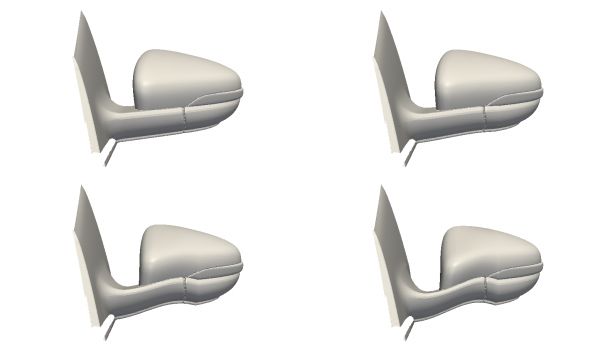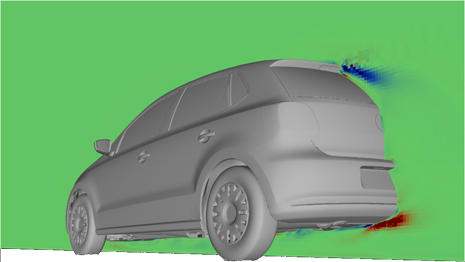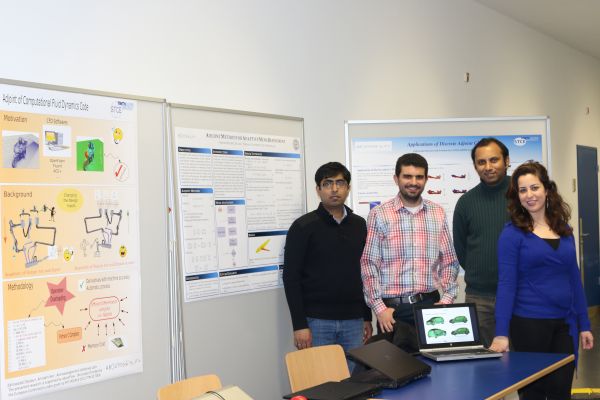Research Fellows
Nikolaos Magoulas
Early Stage Researcher at VW

Hello everybody,
My name is Nikos and I am the ESR #13 at Volkswagen, Wolfsburg. I come from Athens, Greece, where Iíve actually grown up and had all of my studies until I moved in Wolfsburg. As long as I remember myself, I have always shown interest in natural sciences and understanding how things work. So, it was a no-brainer decision to follow the studies of Applied Mathematics and Physical Sciences in the National Technical University of Athens (NTUA). After the finish of my studies there, I attended the MSc of Computional Engineering Science, again in NTUA.
During my time in the MSc I first became aware of the adjoint method and immediately realized that itís a method that can significantly improve the performance of modern engineering designs. Therefore, I feel that I am given a great opportunity here in Wolfsburg, to use and further develop tools that will help provide better performing and much more environmentally friendly cars. From the research point of view, the goals of my project are threefold:
i) Further increase the stability of the adjoint method, which is already in use in the Volkswagen Research.
ii) Develop the unsteady adjoint method, as almost all fluid simulations on car geometries are unsteady
iii) Extend the use of the method in flow control and, maybe, some aeroacoustics optimization problems.
The supervision of my academic PhD project from Prof. Giannakoglou and my close collaboration with his established team in NTUA only adds to my excitement and makes me to look forward to the coming years in AboutFLOW.
In my free time I love travelling and visiting new places; it is a procedure that helps me see the world from the perspective of people from different cultures and ethics and enables me to think out of the box in ways that I couldnít realize before. The AboutFLOW network, with participants from different countries and universities, certainly provides such a valuable experience. In addition, I enjoy being close to the sea, like sailing and swimming, and spending time with friends, while we talk about cars, listen to music or simply chatting.
Objectives:
ē Application of continuous and discrete adjoint codes to steady and
unsteady industrial optimisation cases
ē Integration of the solvers into industrial workflows and demonstration on
relevant cases
Contribute to Work Packages
Month 40 update:
The research project has been extended for an extra 6 months. The goal for the remaining duration of the project is to investigate the use of unsteady adjoint method for the optimization of the developed aerocoustic objective functions. Of particular interest is the computation of sensitivities for the acoustic analogy method known as the Kirchhoff Integral (KI). The coupling of the unsteady adjoint method with the KI method has been a novel approach for the automotive industry and allows for exciting future applications.
Moreover, the shape optimization of a car mirror geometry was performed. The objective function was defined as a surrogate aeroacoustic odel, based on steady state (RANS) flow simulations. The projected was accomplished in collaboration with NTUA and the results have been published in the jounral of "Computer and Fluids" (see publications list).
 |
 |
Midterm update:
Progress has been made in both directions of the research project. The process chain for the optimization of steady state aeroacoustics cases has been established and the final details are ironed out. Considering the development of the unsteady adjoint code, the checkpointing technique has been implemented and application on extrenal vehicle aerodynamics cases has been demonstrated. The unsteady adjoint method in conbination with the use of the differentiated Spalart-Allmaras turbulence model has been used for an early-stage research of flow control sensitivites for vehicle aerodynamics ("Flow control sensitivities for vehicle aerodynamics". 11th. World Congress on Computational Mechanics (WCCM XI)).
The next stage for my research is the development of the method for the computation of sensitivities for unsteady aeroacoustics cost functions (e.g. cost functions that depend on the frequency of pressure fluctuations).
|
|
Flow control sensitivities for drag force reduction
 |
Project start:
The project has been divided in two major directions, the first being the industrial part and the second the academic part. In all cases the continuous formulation of the adjoint method is considered and developed under the OpenFOAM® environment.
For the industrial part, research is focused on improving the robustness of the adjoint solver in steady state cases of the automotive industry. The major concern is aeroacoustics optimization based on steady state physics, as well as numerical stability issues.
On the other hand, the academic part of the project includes the development of the adjoint method for unsteady cases. For this purpose the checkpointing technique will be implemented to address the issue of extensive memory requirements.
My outreach activity was conducted at the Science Tunnel event on the 4th of December 2015 at RWTH Aachen. The goal of the activity was to prepare a stand, where mine and my fellows researchers' (Zahrasadat Dastouri (RWTH), Arindam Sen (RWTH) and Sheikh Razibul Islam (WUT)) work would be presented to the attendees of the event.
Each fellow had prepared a poster or presentation of his research topic and activities. Special attention had been given to make them as attractive as possible, with the inclusion of colourful photos and animations from applications and examples from the field of CFD. My contribution included demonstrations of the application of adjoint method in real life products and a discussion for the exciting future applications.
As expected, the stand gained the attention of the event's audience and gave them the opportunity to have an inside view on the developments of cutting edge technology in the field of CFD. The benefits for us have been greatly appreciated, as we have been able to communicate our research to a non-expert audience and get a glimpse of how our work is perceived from it.




